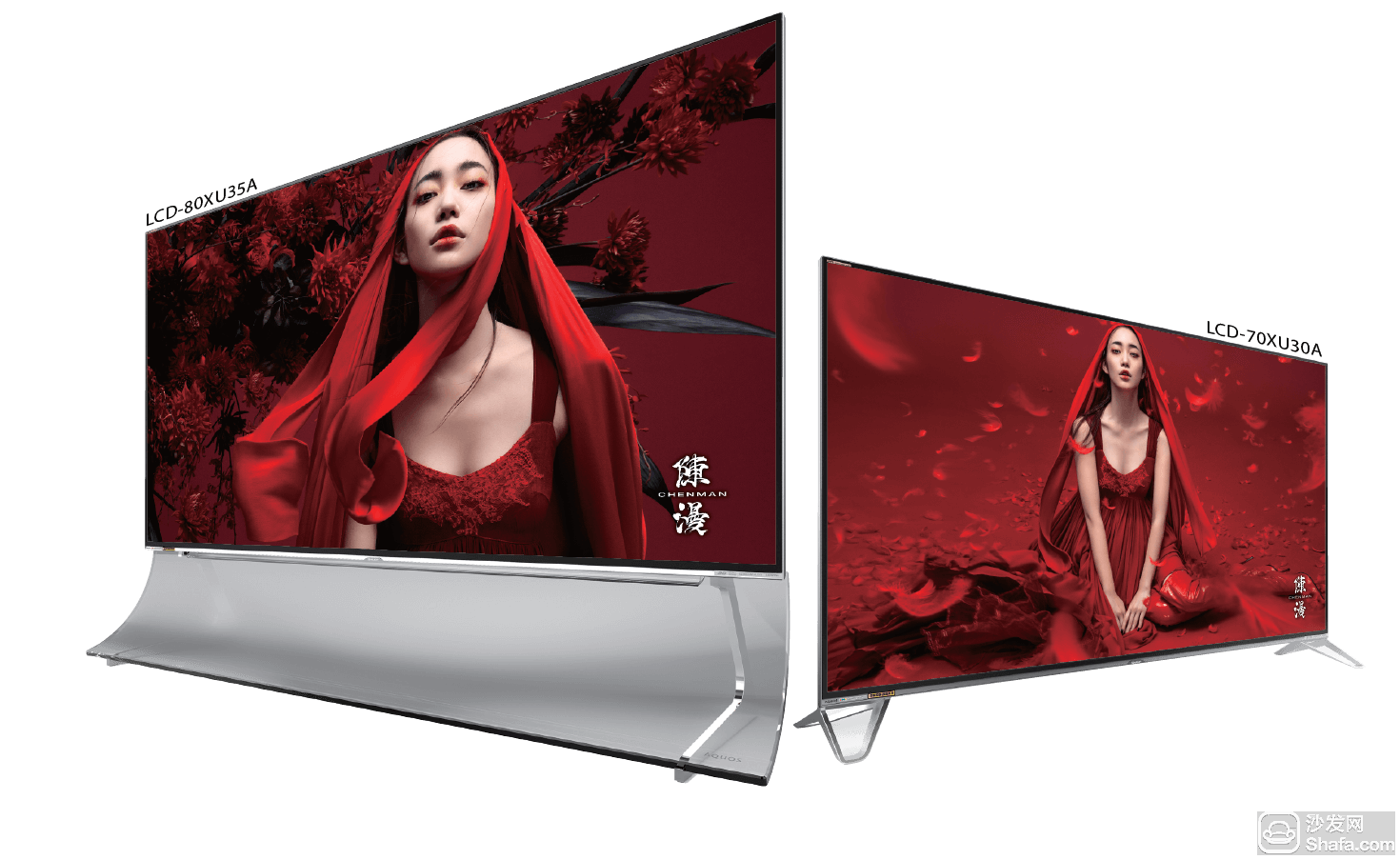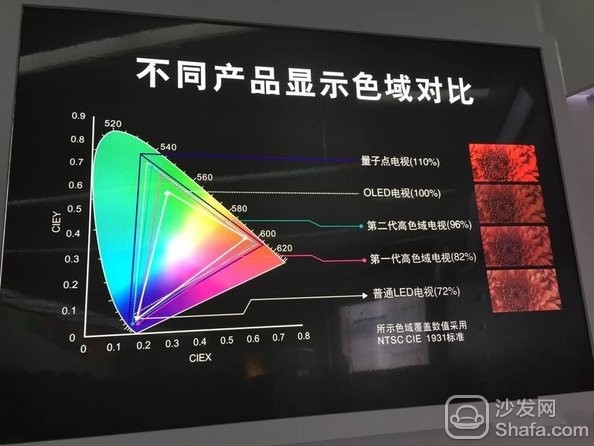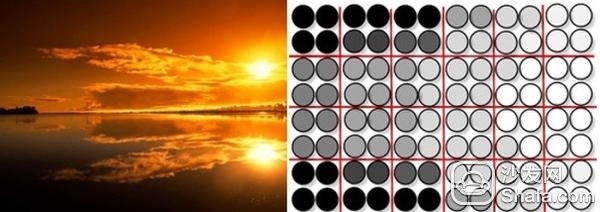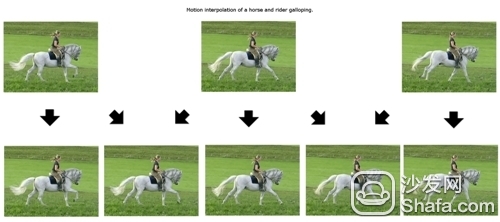TV is an undisputed household appliance for families, and people tend to shop with caution when shopping. However, in the face of mass TV products and complicated technical terms, consumers are often confused and confused when purchasing. Today we come to talk about an important factor in the purchase of television - the quality!
In addition to brands, appearances, and functions, the quality of the TV is a key indicator for measuring the quality of a TV. How to evaluate the quality of a TV? Of course not the light to feel with the naked eye, although it is also very important. For picture quality, we specifically judge from these aspects: resolution, color gamut, backlight partition, and motion picture compensation.
Resolution
The resolution of this parameter is believed to be very familiar to everyone, for the display device resolution is of great significance, in the case of the size of the same size of the screen, the higher the resolution means that the screen more delicate, that is able to show the details of the picture more clearly , greatly increase the user's visual experience.
There are two main types of resolutions available on the market today: 2K and 4K. The so-called 4K, that is, the physical resolution of 38402160, the pixel reached 8.294 million, this product can be rated as truly qualified 4K ultra high-definition television. 4K TV has experienced the development of the past two years, with its high-definition, natural and realistic picture display effect has become the first choice for consumers to buy TV, and the share of 2K TV is gradually declining and will eventually exit the market. However, 8K televisions have already appeared, and some of them will be put into production this year.

Color gamut
Traditional LCD TVs cannot display all the colors that the human eye can sense. Usually, they can only display the color gamut of NTSC 60%-70%. Currently on the market, the color gamut of ordinary LCD TVs is 72%, the first-generation high-gamut LCD TVs are 82%, and the second-generation high-gamut LCD TVs can reach 96%. In recent years, various new technologies, such as quantum dots and OLEDs, have been used to widen the color gamut to 100% or 110%, making the picture more realistic, more vivid colors, clear and sharp, and vivid details.
At present, we have reached the third-generation ultra-wide color gamut of the TCL H8800 quantum dots version using quantum dot technology, the Sharp UG30A, and the Skyworth S9300 with OLED display.

Backlight partition control
In the field of display, the backlight is a component that provides a constant and stable light source to provide a light source so that the human eye can perceive and image. Backlight has a decisive influence on the picture quality of the TV. Because the liquid crystal panel itself does not emit light, the fine liquid crystal particles uniformly arranged on the screen transmit the light from the backlight to restore the picture.
The backlight is a factor that has a great influence on the contrast of the TV picture. As long as the LCD Monitor is powered on, the backlight is working. Even if the picture displayed is an all-black picture, the backlight is working. That is, the backlight of the LCD TV is always lit and emitted. The backlight brightness is constant. However, what we usually see on TV shows changes in brightness and darkness, especially when there are a lot of dark-field scenes when the movie is played. The constantly-lit backlight is not conducive to the performance of dark-field details. This is what we find most LCD TVs cannot do. The black screen is not ideal and causes poor contrast.
So if you choose to use a multi-zone backlight when you buy a TV, its picture quality will be better. However, the backlight partition is only applied to LCD TVs. OLED TVs are self-illuminating and do not require backlight. In other words, OLED TVs naturally have excellent multi-zone backlighting effects, and the contrast ratio is extremely high. With the development of OLED TVs, backlight partitions will slowly disappear.
The current better backlight partition control is the Local Dimming technology, which means the local backlight adjustment. The backlight system composed of hundreds of LEDs can be adjusted according to the brightness of the image. The brightness of the highlighted part of the display screen image can be maximized. At the same time the dark part can reduce the brightness and even close to achieve the best contrast.
There are many TVs with multi-zone backlighting on the market today, such as Skyworth's G8210 and Hisense's XT900.

Motion picture compensation
Due to the lack of response time, the liquid crystal panel has a certain amount of tailing and jitter. When high-speed motion pictures are displayed, especially in sports games, action movies, and other fast-moving images, the trailing and afterimage phenomena also accompany. Not only does this phenomenon seriously affect our viewing results, but it also causes visual fatigue and dizziness when watching such television pictures for a long time. Therefore, a smooth TV picture is undoubtedly another important indicator of the quality of TV pictures.
Therefore, from the birth of LCD TVs, major TV manufacturers are working hard to resolve the tailing phenomenon. The response time was shortened from the original by reducing the thickness of the liquid crystal panel, and then the response speed was increased by increasing the driving voltage. Afterwards, in recent years, the commonly used MEMC anti-shaking technology, each solution alleviates the tailing to some extent. At the same time, it brought new problems.
MEMC technology: Motion Estimate and Motion Compensation, that is, motion estimation and motion compensation, the principle is to use a dynamic image system, insert a frame of motion compensation frame between the traditional two-frame image, the ordinary flat-panel TV 50/60Hz refresh rate Raise to 100/120Hz. The motion picture compensation optimization is to add a frame of motion compensation frame between the traditional two frames of images, so as to achieve the effect of clearing the residual image of the previous frame image and improving the dynamic clarity. TVs using MEMC technology can reduce the image smear to a lower level, so that the high-speed motion picture is clearer and smoother without smearing.
In addition, when choosing a TV, it depends on whether or not MEMC technology is used. It also depends on the operating speed of the scanning system configured on the television. In general, the faster the scanning speed, the more stable the TV picture becomes. Only such a double protection will ensure that after the end of the movie, there will be no dazzling ending titles, and a meteor-like F1 car will not be dragging its long tail.

Subjective feelings
Of course, in addition to the parameters mentioned above, there is a more important factor is our own subjective feelings of contrast through the eyes. In online shopping malls, each TV is put together. Carefully watching the contrast can usually tell which images are good and which colors are not. In the television evaluation, it is usually through the picture, video playback to participate in the evaluation of the TV's color transition, contrast, color reproduction capabilities and other items.
summary
In summary, in the purchase of TV, we can determine the screen body parameters and quality technology of TV through four factors such as screen resolution, color gamut, backlight technology, and motion picture technology, and judge through subjective feelings. Whether it is comfortable or not, it is possible to judge the quality level of a TV and decide whether to buy it or not. The above "Five Trick" is Xiao Bian's experience in studying the quality of TV. To share with friends in need, you can easily purchase a really good quality TV.
In addition to brands, appearances, and functions, the quality of the TV is a key indicator for measuring the quality of a TV. How to evaluate the quality of a TV? Of course not the light to feel with the naked eye, although it is also very important. For picture quality, we specifically judge from these aspects: resolution, color gamut, backlight partition, and motion picture compensation.
Resolution
The resolution of this parameter is believed to be very familiar to everyone, for the display device resolution is of great significance, in the case of the size of the same size of the screen, the higher the resolution means that the screen more delicate, that is able to show the details of the picture more clearly , greatly increase the user's visual experience.
There are two main types of resolutions available on the market today: 2K and 4K. The so-called 4K, that is, the physical resolution of 38402160, the pixel reached 8.294 million, this product can be rated as truly qualified 4K ultra high-definition television. 4K TV has experienced the development of the past two years, with its high-definition, natural and realistic picture display effect has become the first choice for consumers to buy TV, and the share of 2K TV is gradually declining and will eventually exit the market. However, 8K televisions have already appeared, and some of them will be put into production this year.

Sharp's 8K TV
Color gamut
Traditional LCD TVs cannot display all the colors that the human eye can sense. Usually, they can only display the color gamut of NTSC 60%-70%. Currently on the market, the color gamut of ordinary LCD TVs is 72%, the first-generation high-gamut LCD TVs are 82%, and the second-generation high-gamut LCD TVs can reach 96%. In recent years, various new technologies, such as quantum dots and OLEDs, have been used to widen the color gamut to 100% or 110%, making the picture more realistic, more vivid colors, clear and sharp, and vivid details.
At present, we have reached the third-generation ultra-wide color gamut of the TCL H8800 quantum dots version using quantum dot technology, the Sharp UG30A, and the Skyworth S9300 with OLED display.

High Color TV Evolution
Backlight partition control
In the field of display, the backlight is a component that provides a constant and stable light source to provide a light source so that the human eye can perceive and image. Backlight has a decisive influence on the picture quality of the TV. Because the liquid crystal panel itself does not emit light, the fine liquid crystal particles uniformly arranged on the screen transmit the light from the backlight to restore the picture.
The backlight is a factor that has a great influence on the contrast of the TV picture. As long as the LCD Monitor is powered on, the backlight is working. Even if the picture displayed is an all-black picture, the backlight is working. That is, the backlight of the LCD TV is always lit and emitted. The backlight brightness is constant. However, what we usually see on TV shows changes in brightness and darkness, especially when there are a lot of dark-field scenes when the movie is played. The constantly-lit backlight is not conducive to the performance of dark-field details. This is what we find most LCD TVs cannot do. The black screen is not ideal and causes poor contrast.
So if you choose to use a multi-zone backlight when you buy a TV, its picture quality will be better. However, the backlight partition is only applied to LCD TVs. OLED TVs are self-illuminating and do not require backlight. In other words, OLED TVs naturally have excellent multi-zone backlighting effects, and the contrast ratio is extremely high. With the development of OLED TVs, backlight partitions will slowly disappear.
The current better backlight partition control is the Local Dimming technology, which means the local backlight adjustment. The backlight system composed of hundreds of LEDs can be adjusted according to the brightness of the image. The brightness of the highlighted part of the display screen image can be maximized. At the same time the dark part can reduce the brightness and even close to achieve the best contrast.
There are many TVs with multi-zone backlighting on the market today, such as Skyworth's G8210 and Hisense's XT900.

Multi-backlit partitioning technology
Motion picture compensation
Due to the lack of response time, the liquid crystal panel has a certain amount of tailing and jitter. When high-speed motion pictures are displayed, especially in sports games, action movies, and other fast-moving images, the trailing and afterimage phenomena also accompany. Not only does this phenomenon seriously affect our viewing results, but it also causes visual fatigue and dizziness when watching such television pictures for a long time. Therefore, a smooth TV picture is undoubtedly another important indicator of the quality of TV pictures.
Therefore, from the birth of LCD TVs, major TV manufacturers are working hard to resolve the tailing phenomenon. The response time was shortened from the original by reducing the thickness of the liquid crystal panel, and then the response speed was increased by increasing the driving voltage. Afterwards, in recent years, the commonly used MEMC anti-shaking technology, each solution alleviates the tailing to some extent. At the same time, it brought new problems.
MEMC technology: Motion Estimate and Motion Compensation, that is, motion estimation and motion compensation, the principle is to use a dynamic image system, insert a frame of motion compensation frame between the traditional two-frame image, the ordinary flat-panel TV 50/60Hz refresh rate Raise to 100/120Hz. The motion picture compensation optimization is to add a frame of motion compensation frame between the traditional two frames of images, so as to achieve the effect of clearing the residual image of the previous frame image and improving the dynamic clarity. TVs using MEMC technology can reduce the image smear to a lower level, so that the high-speed motion picture is clearer and smoother without smearing.
In addition, when choosing a TV, it depends on whether or not MEMC technology is used. It also depends on the operating speed of the scanning system configured on the television. In general, the faster the scanning speed, the more stable the TV picture becomes. Only such a double protection will ensure that after the end of the movie, there will be no dazzling ending titles, and a meteor-like F1 car will not be dragging its long tail.

Motion picture interpolation frame
Subjective feelings
Of course, in addition to the parameters mentioned above, there is a more important factor is our own subjective feelings of contrast through the eyes. In online shopping malls, each TV is put together. Carefully watching the contrast can usually tell which images are good and which colors are not. In the television evaluation, it is usually through the picture, video playback to participate in the evaluation of the TV's color transition, contrast, color reproduction capabilities and other items.
summary
In summary, in the purchase of TV, we can determine the screen body parameters and quality technology of TV through four factors such as screen resolution, color gamut, backlight technology, and motion picture technology, and judge through subjective feelings. Whether it is comfortable or not, it is possible to judge the quality level of a TV and decide whether to buy it or not. The above "Five Trick" is Xiao Bian's experience in studying the quality of TV. To share with friends in need, you can easily purchase a really good quality TV.
We offer industrial grade rugged metal case windows all-in-one-pc,"AIO" for short. Size From 8.4" to 72", round corner design,slim and elegant,black or white color.
With Inter 1307U CPU,large RAM,HDD/SDD,1080p full HD resolution,vandal-proof panel,IR muti-touch screen,indoor or outdoor usage available,quick response and vivid picture.
With standard VESA holes support wall mounted,desktop standing,flush mounted,clip-on.Suit for kiosks,cabinets,pos,industrial control,education whiteboard,meeting AIO etc.
all in one panel pc,all in one computer,industrial all in one pc,android all in one pc,windows all in one pc,touch screen all in one pcs
Shenzhen Hengstar Technology Co., Ltd. , https://www.angeltondal.com